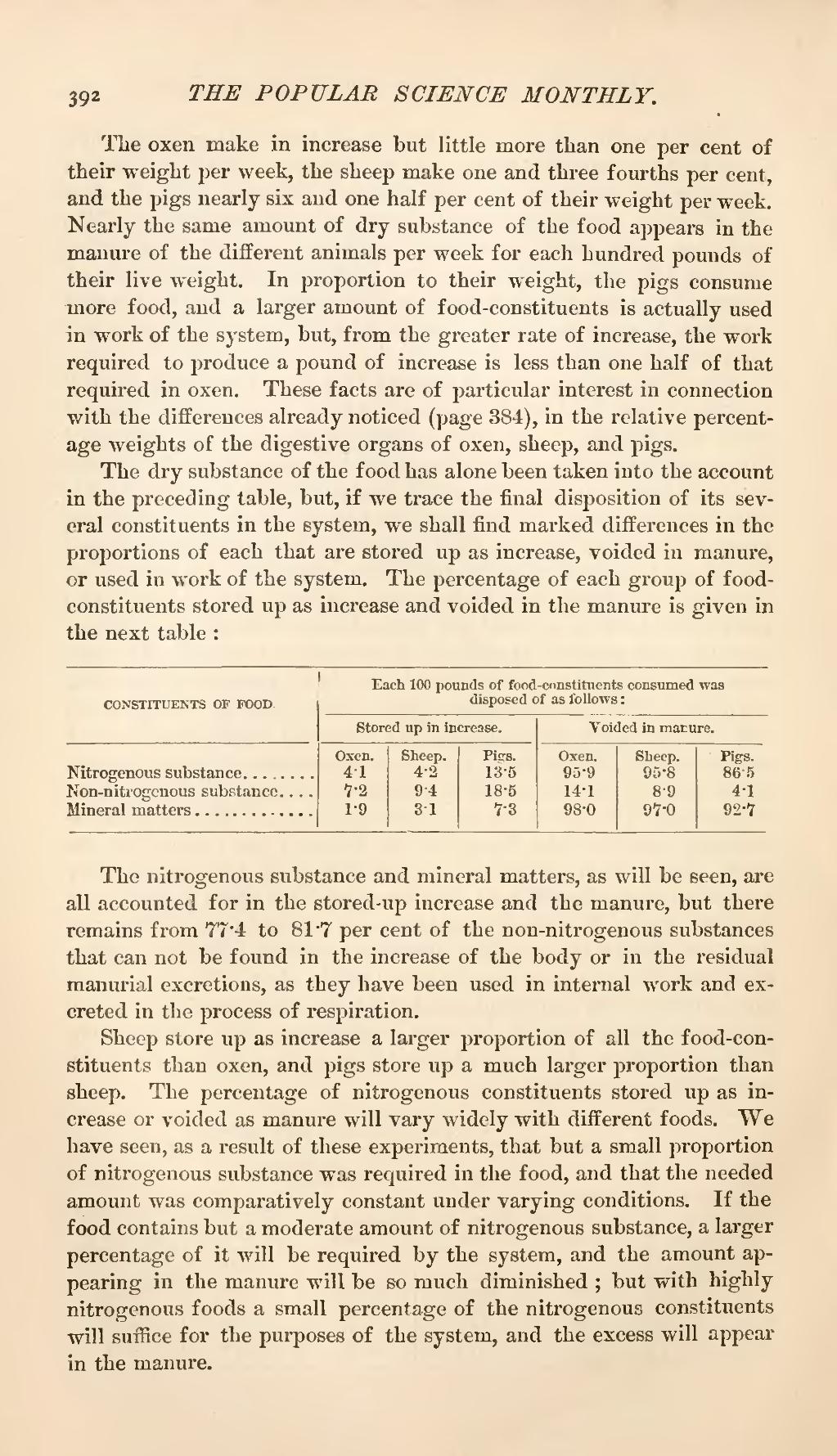The oxen make in increase but little more than one per cent of their weight per week, the sheep make one and three fourths per cent, and the pigs nearly six and one half per cent of their weight per week. Nearly the same amount of dry substance of the food appears in the manure of the different animals per week for each hundred pounds of their live weight. In proportion to their weight, the pigs consume more food, and a larger amount of food-constituents is actually used in work of the system, but, from the greater rate of increase, the work required to produce a pound of increase is less than one half of that required in oxen. These facts are of particular interest in connection with the differences already noticed (page 384), in the relative percentage weights of the digestive organs of oxen, sheep, and pigs.
The dry substance of the food has alone been taken into the account in the preceding table, but, if we trace the final disposition of its several constituents in the system, we shall find marked differences in the proportions of each that are stored up as increase, voided in manure, or used in work of the system. The percentage of each group of food constituents stored up as increase and voided in the manure is given in the next table:
| CONSTITUENTS OF FOOD | Each 100 pounds of food-constituents consumed was disposed of as follows: | |||||
| Stored up in increase. | Voided in mature. | |||||
| Oxen. | Sheep. | Pigs. | Oxen. | Sheep. | Pigs. | |
| Nitrogenous substance | 4·1 | 4·2 | 13·5 | 95·9 | 95·8 | 86·5 |
| Non-nitrogenous substance | 7·2 | 9·4 | 18·5 | 14·1 | 8·9 | 4·1 |
| Mineral matters | 1·9 | 3·1 | 7·3 | 98·0 | 97·0 | 92·7 |
The nitrogenous substance and mineral matters, as will be seen, are all accounted for in the stored-up increase and the manure, but there remains from 77·4 to 81·7 per cent of the non-nitrogenous substances that can not be found in the increase of the body or in the residual manurial excretions, as they have been used in internal work and excreted in the process of respiration.
Sheep store up as increase a larger proportion of all the food-constituents than oxen, and pigs store up a much larger proportion than sheep. The percentage of nitrogenous constituents stored up as increase or voided as manure will vary widely with different foods. We have seen, as a result of these experiments, that but a small proportion of nitrogenous substance was required in the food, and that the needed amount was comparatively constant under varying conditions. If the food contains but a moderate amount of nitrogenous substance, a larger percentage of it will be required by the system, and the amount appearing in the manure will be so much diminished; but with highly nitrogenous foods a small percentage of the nitrogenous constituents will suffice for the purposes of the system, and the excess will appear in the manure.
